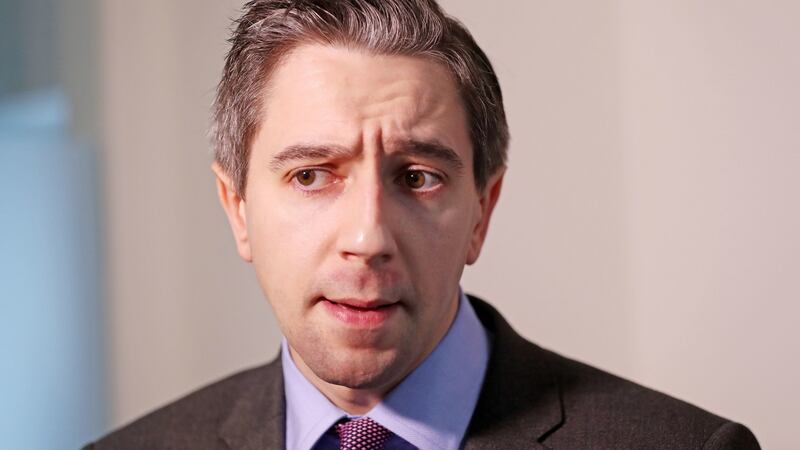If the funding crisis surrounding that new National Children’s Hospital has been testing citizens’ faith in the Government of late then the contents of a recent Cabinet memo could provide some reassurance.
Minister for Health Simon Harris has come up with an ingenious and not at all macabre solution which may now mean that the project can be completed. The creative Band-Aid he proposes is to offer to name departments within the new facility after companies or persons who make sizeable donations to the project’s bank account.
If it works, the funds raised will go towards making up at least some of the shortfall in the Government’s coffers, which could run as high as €1 billion by the time construction is finished.
Sick children will no doubt benefit from the scheme but more importantly a compelling synergy between Government ineptitude and private sector’s need for brand awareness and self-congratulation has been found.
Details of how the Government plans to find donors for its scheme have not yet been released. Some mechanism, however, will have to be worked out to identify appropriate candidates.
Of course, Harris may well find that there is a queue of individuals and companies banging down his door to cover the Government’s ass, but his department will need to have their own set of preferred candidates they can approach in the event that there isn’t.

Branding opportunities
Government marketing teams will right now be brainstorming the branding opportunities that leukaemia, meningitis and other common children’s diseases present. Poorly kids can expect to attend such facilities as the Yahoo-ping cough research centre, perhaps be seen in Kentucky Fried Chicken Pox wing or even be get to stay at the Malt-easles ward.
Of course, it might not be a company that is successful. The department will be open to approaches from individuals with a name that can be combined to make a catchy title too.
Ireland’s famous wedding planner could have his own Fr-oncology department. Dundalk’s finest may be interested in sponsoring a Corr-thopedic ward. Gabriel, Ed and Nicky will have to fight it out of course to have the Burns unit named after them.
Of course, this exciting opportunity would not have arisen had the costs of the hospital not escalated by 60 per cent since 2014. A project team’s report, however, said this might not have happened had there been a “more robust early-warning process” during the design stage.
It did not clarify what form the early-warning process should or could have taken.
It may have been something as technologically sophisticated as one of the many staff tasked with managing the finances in a meeting putting their hand up and saying: “Guys I’m worried we might be running over budget.” Such elaborate systems are obviously expensive, however, and available only in the most advanced economies.
There is a whole swathe of human behaviour that wouldn't meet the criteria we would deem acceptable for connection to a facility dedicated to children
Potential donors who may be nervous of the commitment that the association with the hospital demands of them have examples from which they can take inspiration.
Ronald McDonald House is a vital facility that provides accommodation for families of patients in Crumlin children's hospital and is a good example of the corporate sector picking up the tab for the Government's shortcomings in the arena of children's health.
McDonald’s, however, has been able to reap the benefits of having the facility named after it while also finding ways to offset the onerous financial burden that the association places on the $100 billion company.
Fun runs, cycles, charity walks and presumably containers beside the cash register are used to raise funds from their customers that McDonald’s itself presumably cannot afford.
The numerical breakdown of how much of the funds McDonald’s contributes from its profits and those that are collected from their customers in their restaurants may well not be getting through to the general public but the branding association continues unaffected.
Reputational vulnerability
The only concern for Harris’s department will be to protect the Government’s side of the bargain in the event of a breakdown of the relationship with the benefactors.
The proposed branding arrangements will inevitably create a link that leaves the children’s hospital’s reputation susceptible to their behaviour. And as we know, there is a whole swathe of human behaviour that wouldn’t meet the criteria we would deem acceptable for connection to a facility dedicated to children.
For example, if an individual makes a donation and ends up having a wing of the hospital called after them but later turns out to be a prolific paedophile then we will hope that the Government isn’t left legally tied into the naming agreement with them.
One hopes that in contract drawn up the Government will have had the foresight to a) do rigorous checks on the applicants and b) anticipate as far as possible circumstances that would make the contract null and void and insert them as clauses.
Although if no “robust early-warning process” was in place for the funding aspect of the project it is probably naive to expect one to function correctly in this area either.







